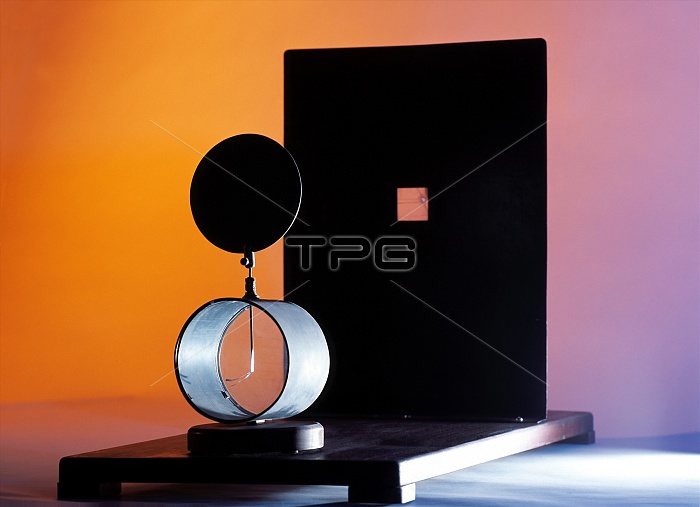
Hallwachs's electroscope. This device was used in an 1888 experiment by the German physicist Wilhelm Hallwachs (1859-1922), the results of which were explained by J. J. Thomson. Light passing through the square hole in the black plate illuminates a round copper plate. Below this is an electroscope (cylinder) that is negatively charged (as seen by the thread attracted to one side). If the light is of sufficient energy, the electroscope will lose its charge (the thread falls). Thomson explained this as light causing electrons to be emitted from the copper plate, to be replaced by charge from the electroscope. Einstein, in 1905, used quantum theory to explain this photoelectric effect, and this won him the 1921 Nobel Prize for Physics.
| px | px | dpi | = | cm | x | cm | = | MB |
Details
Creative#:
TOP10190265
Source:
達志影像
Authorization Type:
RM
Release Information:
須由TPG 完整授權
Model Release:
N/A
Property Release:
N/A
Right to Privacy:
No
Same folder images:

 Loading
Loading